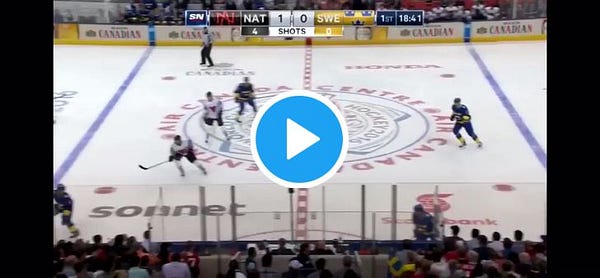Angling in Hockey to Dictate Play, How to Go From Reactive to Proactive
How to use angling in hockey to go from reactive to proactive
Let’s talk about the angling in hockey and why it’s important to every coach and player.
“Read and React” is a common phrase you’ll hear around the rink and from coaches worldwide. And while it’s not the worst advice, we think there’s a higher level.
“Read and Dictate” is what ought to be preached. Players should have the tools to dictate play. Rather than just waiting around for something to happen, then reacting, elite players can proactively control the game.
The Key Skill: Angling
Angling is the most underrated skill in hockey. Why? It controls how the game is played and on what terms, like a General commanding a battlefield.
Players that take great angles control the entire game by dictating the terms of play. This shapes the game in which all players must play. Being able to consistently angle effectively is a massive advantage.
The classic angling example is where the first player in on the forecheck (F1) angles the puck carrier to one side of the ice, where the rest of the team can then steal the puck away. But we submit that angling goes well beyond that.
Not only is the F1 important, the other players are even more important. They are responsible for leading the opposition into bad spots. If their assignment gets the puck, they should have their opponent in a compromising position.
By dictating and controlling the available space, players are much more difficult to play against.
Defending skating forwards
Another great example of dictating play via angling is when defenders play defense by skating forward, not backward, effectively cutting off the offense before it gets going.


If a player is tightly checking an opposition’s potential passing target, the puck is likely heading somewhere else. But if a defending player wants a certain player (in a compromised position) to get the puck, they can play a looser gap. In these instances, defenders dictate, not the offense.
Dictating the terms
Controlling the game without the puck starts by dictating the spaces and options available to the opponents.
The key shift here is in the mindset of players. Players are empowered to take a proactive approach to the game. No more read and react. Rather, it’s read and dictate.
This is empowering to individual players and as a team. As players get better and better at angling, the group starts to hunt the puck and suffocates all the passing options and lanes. Players become active in forcing the opposition to ‘bad ice’ on and away from the puck.
Here is a great example of Team North America proactively hunting at the World Cup in 2016:


This proactive mentality allows players to dictate the offense without even having to touch the puck.
Practical Advantages
Great defense has two principles:
Force the opposition away from the valuable ice and into bad spots where dangerous options are limited (i.e., the perimeter).
Staying between your goalie and the opposition. (i.e., “defensive side” or “above the puck”)
Angling helps with both by forcing the opposition where you want them to go. As an added benefit, the angling player’s forward momentum is naturally returning to their defensive zone and into the defensive side of the play. Even if a player gets beat they are already skating forward with the play.
Great graphic by Mitch Brown
Necessary Angling Skills
There are a few keys elements to note when teaching angling:
Skating on arcs - Players that skate in straight lines are easy to get around. Those that arc their routes are highly effective. When done properly, players will pick up speed into the opponent. Players who have weak outside edges tend to struggle taking quality angles.
Stick awareness - Angling players should be using their stick to influence play. First, players will take away passing lanes and influence puck carriers to take the ice where they want them to go. Second, when going for contact or stripping puck carriers of possession, they should lead with stick-on-puck. Players are giving up 4-6 feet of space to the opposition if they don't lead stick-on-puck.
Ying and Yang
On the flip side, how does the offense overcome a team that takes quality angles?
Tune in to our next post where we make you enraged that none of your coaches or coaching courses taught you the offensive principle necessary to unlock space by controlling the defender’s skates. Click here to go to it now.
Did you enjoy this newsletter?
Help us spread the ideas within and share it with the people you care about




